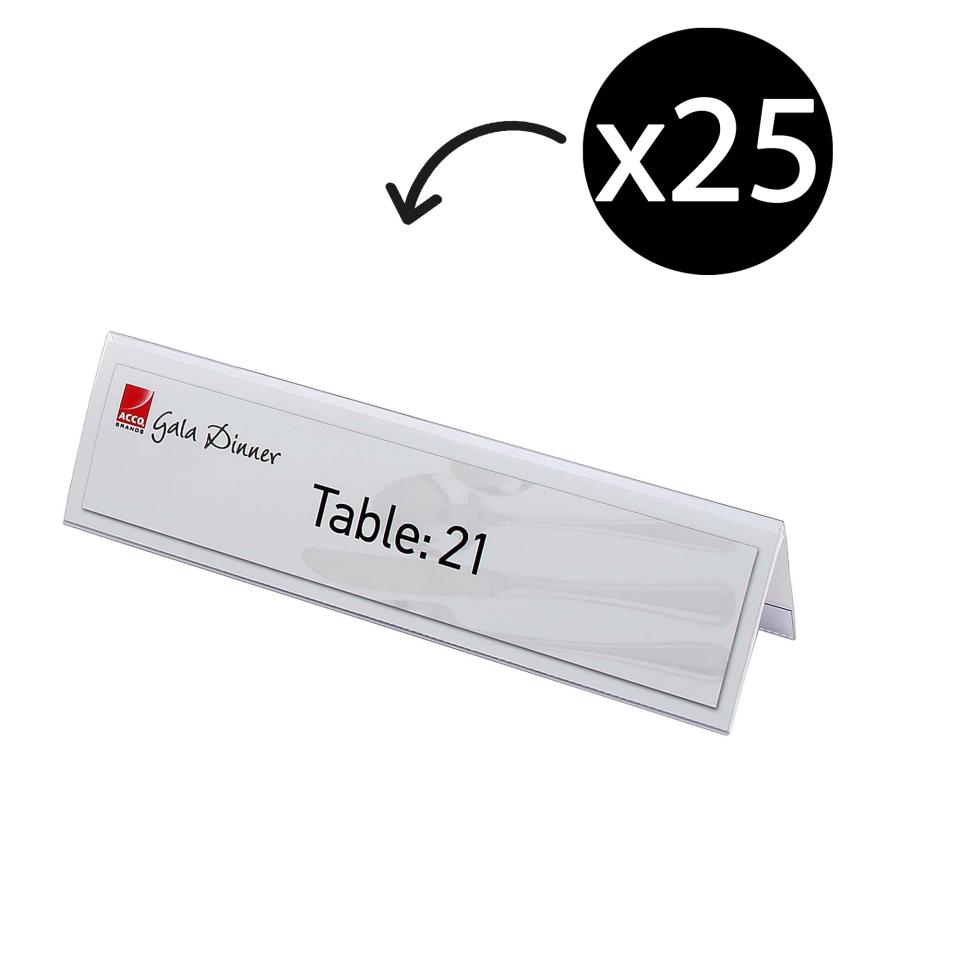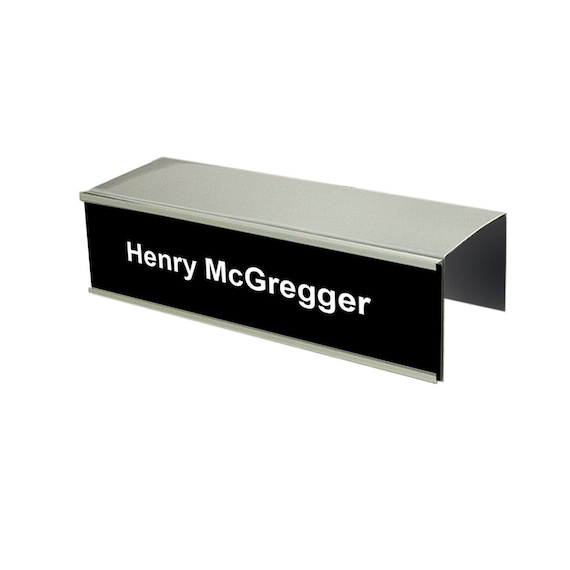What Printing Technologies Work Best for Plastic Nameplates?
How Plastic Nameplates Are Manufactured: A Comprehensive Guide to Their Manufacturing Refine
The production of plastic nameplates involves a number of specific actions, starting from the selection of appropriate materials to the final finishing touches. Each phase is essential, making sure the item fulfills details requirements for longevity and appearances. Various production methods play a considerable duty in crafting these nameplates. Comprehending these processes can shed light on the intricacies behind what could seem like an easy item. What elements add to the top quality and customization of these nameplates?
Understanding Plastic Products Made Use Of for Nameplates

The Style Process: From Principle to Prototype
The style process for plastic nameplates starts with a clear concept that overviews the overall development. Designers collaborate with clients to define the purpose, style, and details demands of the nameplate. This first phase includes conceptualizing sessions, laying out ideas, and choosing colors and font styles that straighten with branding goals.Once the concept is established, developers utilize computer-aided style (CAD) software to produce comprehensive electronic representations. These models permit visualization and adjustments prior to progressing. Responses from stakeholders is indispensable during this stage, as it assists improve the design to meet expectations.After wrapping up the electronic model, a physical design might be generated, often via methods like 3D printing. This substantial representation enables more assessment of aesthetic appeals and functionality. Overall, the style process is a crucial action that lays the structure for the efficient production of high-quality plastic nameplates.
Cutting and Shaping the Plastic
In the cutting and shaping stage of plastic nameplate manufacturing, the choice of products plays a crucial function in identifying the end product's quality and sturdiness (Plastic Nameplates). Various accuracy cutting techniques, such as laser cutting and CNC machining, guarantee that the plastic is formed with precision and uniformity. This combination of cautious material selection and progressed cutting methods is essential for generating high-quality nameplates

Material Choice Refine
Picking the appropriate material is necessary for generating top notch plastic nameplates. Various kinds of plastics are offered, each offering distinct advantages and features. Usual options include acrylic, polycarbonate, and PVC. Acrylic is favored for its clarity and UV resistance, making it optimal for outdoor applications. Polycarbonate, known for its longevity and impact resistance, appropriates for environments that require boosted protection. PVC is frequently chosen for its cost-effectiveness and convenience in design. The choice process likewise considers variables such as density, surface, and color surface, which can greatly influence the last look and performance of the nameplate. Inevitably, the chosen product should line up with the meant usage and visual objectives of the plastic nameplate.
Accuracy Cutting Techniques
While choosing the ideal material prepares, accuracy reducing techniques play a necessary duty in forming the plastic nameplates right into their last types. Different approaches, consisting of laser cutting, CNC milling, and pass away cutting, are utilized to achieve accuracy and consistency. Laser cutting uses focused light to create tidy sides and detailed layouts, ideal for complex patterns. CNC milling offers flexibility by eliminating excess product with accuracy, fitting various densities and forms. Die reducing, on the other hand, permits mass manufacturing of uniform items, enhancing efficiency. Each strategy is chosen based on the design specs and the preferred finish, making certain that the end product satisfies top quality standards and consumer assumptions while preserving longevity and visual allure.
Printing Techniques for Personalization
Exactly how can producers achieve accurate and vibrant styles on plastic nameplates? The answer hinges on numerous printing methods tailored for modification. Digital printing has actually obtained popularity because of its ability to produce detailed layouts and high-resolution images directly onto plastic surface areas. This approach allows for fast turnaround times and minimal configuration prices, making it optimal for brief runs and personalized orders.Screen printing continues to be an additional commonly made use of technique, particularly for bigger quantities. It includes developing a stencil and using layers of ink, leading to abundant shades and toughness. UV printing, which utilizes ultraviolet light to cure the ink, is additionally efficient, offering exceptional adhesion and resistance to fading.Additionally, pad printing provides convenience for irregularly shaped nameplates, permitting comprehensive styles on difficult surface areas. These printing techniques allow manufacturers to fulfill diverse client needs while making certain high quality and long life in their plastic nameplate products.
Surface Area Treatments and Finishing Options
,aspect=fit)
Quality Assurance Measures in Production
Assuring the highest standards of top quality control during the manufacturing of plastic nameplates is necessary for preserving item stability and client fulfillment. Suppliers implement rigorous inspection methods at numerous phases of the manufacturing process. Raw materials undergo comprehensive testing to verify they fulfill specs for sturdiness and color consistency. Throughout the molding phase, automated systems keep track of parameters such as temperature level and stress to avoid defects.In enhancement, visual inspections are performed to determine any type of surface flaws or misalignments. When the nameplates are created, they go through useful tests, consisting of adhesion examinations for printed aspects and stress tests for sturdiness. Quality assurance teams frequently use statistical tasting approaches to analyze sets, ensuring that any deviations from criteria are without delay resolved. This thorough approach not only enhances product high quality but likewise fosters count on with customers, verifying the supplier's dedication to quality in every nameplate generated.
Packaging and Distribution of Finished Nameplates
The packaging and circulation of finished plastic nameplates are important steps in guaranteeing they reach consumers in perfect problem. Different packaging materials are chosen to secure the nameplates during transit, while delivering approaches are very carefully picked based upon effectiveness and cost-effectiveness. Furthermore, effective storage remedies are implemented to keep high quality till the nameplates are supplied.
Packaging Products Utilized
When distributing finished plastic nameplates, choosing ideal packaging products is important to assure their defense throughout transportation. Commonly utilized materials consist of bubble wrap, foam padding, and cardboard boxes, all developed to cushion the nameplates against shocks and impacts. Bubble cover supplies a versatile obstacle, while foam padding warranties that nameplates continue to be safely in place, lessening the danger of scratches or damage. Furthermore, durable cardboard boxes are used to have the nameplates, providing structural support and defense from external aspects. Tags might be used to indicate managing directions or breakable components, further improving safety and security throughout transportation. On the whole, using top quality product packaging materials substantially adds to the integrity and discussion of the finished plastic nameplates upon arrival at their location.
Delivering Techniques Used
Effective distribution of ended up plastic nameplates counts on different delivery approaches that assure prompt and safe and secure delivery. Business often utilize messenger services, products delivery, and postal solutions, depending upon the dimension, weight, and destination of the plans. For local deliveries, copyright solutions provide rapid transportation, ensuring nameplates reach clients promptly. For bigger orders, products delivery is preferred, utilizing vehicles or shipping containers to transfer mass amounts successfully. Postal services act as a cost-efficient alternative for smaller sized deliveries, particularly for residential distributions. All delivery approaches prioritize protective packaging to stop damage during transit. Tracking systems are also made use of to keep track of deliveries, providing clients with real-time updates and reassurance concerning the status of their orders.
Storage Solutions Implemented

Regularly Asked Inquiries
What Kinds Of Organizations Commonly Make Use Of Plastic Nameplates?
Plastic nameplates are frequently used by various companies, consisting of offices, hospitals, manufacturing facilities, and schools. These nameplates serve necessary features such as identification, info display, and branding, contributing to business efficiency and professional look across varied settings.
How much time Does the Entire Production Process Take?
The production procedure duration varies based upon intricacy and quantity, usually ranging from a couple of days to numerous weeks. Factors influencing this timeline consist of layout approval, product schedule, and manufacturing methods used by the company.
Can Plastic Nameplates Be Recycled After Use?
Plastic nameplates can be recycled, provided they are explanation made from recyclable products. The accessibility of reusing programs and local regulations may affect their recyclability. Proper disposal techniques are vital to assure effective recycling.
What Are the Environmental Effects of Plastic Nameplate Manufacturing?
The ecological effects of plastic nameplate manufacturing include carbon discharges, source deficiency, and contamination from producing procedures. Plastic Nameplates. Additionally, improper disposal adds to plastic waste, adversely impacting environments and wild animals, highlighting the demand for sustainable practices
Are There Any Type Of Safety And Security Worry About Plastic Nameplates?
Safety and security worries regarding plastic nameplates mainly involve potential chemical direct exposure throughout manufacturing and the threat of products degrading with time, which may lead to unsafe materials being launched, affecting both human health and wellness and the atmosphere. While various materials can be used for nameplates, plastic remains a preferred selection due to its adaptability and sturdiness. In the cutting and forming stage of plastic nameplate manufacturing, the option of products plays a crucial role in identifying the final item's high quality and resilience. Selecting the ideal product is necessary for producing top quality plastic nameplates. While choosing the ideal material lays the foundation, precision cutting strategies play a vital role in shaping the plastic nameplates into their last types. When dispersing ended up plastic nameplates, picking suitable product packaging materials is essential to ensure their protection throughout transit.